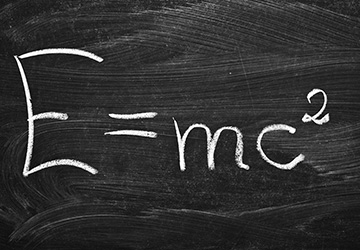Einstein's mass-energy relation
The most famous equation in physics is Einstein’s mass-energy equivalence: . It says that a stationary object's total energy is related to its mass by the speed of light squared.The total energy is still conserved. As some energy is released in the form of radiation, the total energy of the massive particles after the interaction must be less.
This process can be partially observed during nuclear fission when an atom splits into smaller, lighter nuclei

Mass can be converted into pure energy-
For example, if you could somehow take the mass of a person and convert it into light according to the mass-energy relationship, suppose you would have been mass 60 kg then you are able to create the energy of 60×(3×10^8)^2 i.e approx 5.4× joules of energy. That’s enough to supply electricity to the Bharat (India) for nearly one and half year.But the conversion of energy from the mass is not an easy task.



0 Comments